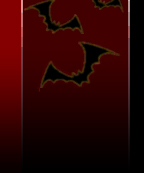|
Castlevania: Curse of Darkness (2005)

|

Platform: Playstation 2 / Xbox
Stages: 10
Passwords
Secrets
Weirdness
Opening
Ending
|

American PS2 Version
|
|
|
At some point in Castlevania: Curse of Darkness, there's a stage called the Tower of Eternity. It is fifty floors, which means you go through fifty identical rooms, fighting enemies over and over.
"Ha ha! How clever!" I mused to myself. Castlevania: Lament of Innocence was a decent game, but it's biggest failing was the insanely repetitive level design. Maybe the designers had realized this, and were parodying themselves?
I was, of course, completely fooling myself. The Tower of Eternity is entirely serious. After slogging through it - you can't leave once you enter - I got to the top and got some item that allowed me to equip three accessories instead of two. At this point, over halfway through the game, I only had two accessories total, neither of which were remotely useful. I had wasted maybe twenty minutes for, for all intents and purposes, nothing. Castlevania fans will remember Harmony of Dissonance, and its asinine "collect furniture!" subquest, wherein you'd go out of your way to some part of the castle and end up getting rewarded with a completely useless set of drawers. This isn't much different. In many ways, it's worse. This one area is not a huge section of the game, but it does reveal one thing - the designers simply didn't learn their lesson.
The problem with Curse of Darkness isn't necessarily that it's a bad game. The problem is that it was apparently designed in a vacuum. It ignores any advances made by 3D action games in the last few years, and brushes aside most of the major criticisms of Lament of Innocence.
Now, Koji Igarashi loves fan service - all you need to do is look at Dawn of Sorrow and you'll see all of the little tributes he's put in please long time Castlevania players. He's also made it well known that he loves Castlevania 3. Tying these together, Curse of Darkness takes place a mere three years after Trevor and crew defeated Dracula. Unfortunately, Dracula's Curse is still alive in the land, and it appears to be the work of an evil Devil Forgemaster named Isaac. Only Hector, himself a reformed member of Dracula's crew, can put a stop to this. While it may seem poetic to create a storyline sequel to one of the best game of the series, the plot barely takes advantage of it. It seems to be an excuse for Trevor Belmont to make an appearance, and while this is, of course, awesome, it ends up feeling a little empty. I should be visiting locations of Castlevania 3 but in 3D. I should be fighting through pirate ships and ruins of Atlantis and make my way up that same cathedral that was the second screen of Castlevania 3. The game should have started off with the hero praying at a cross, standing up as lightning strikes, his cape heroically flying around. You should have been able to enter your name as "Help Me" and activate some kind of cheat mode. There is no Sypha, no Grant, certainly no Alucard. These excellent premise is so half-assed you wonder why they even bothered with it.
Like many of the previous Castlevania games, the story is told in nonsensical interludes where Hector stumbles upon some other character that is just kinda hanging out. There is usually a misunderstanding of some kind, or they want to challenge your power, and you occasionally end up fighting them. Amongst them is the creepy priest Zead, the oddly polite Saint Germain, and the beautiful witch Julia, who acts as the shopkeeper. As silly as some of the writing is, the voice acting is surprisingly top notch. Those with an aversion to excellent English voice acting will find Japanese voices intact as well.
In between these rare story scenes, there is the actual game. The adventure begins with a long, featureless hallway, and eventually ends with a small set of steps. It's a straight line, and you can't even see those steps because they're enshrouded in fog. This does not paint a pretty picture, and it does not get much better. Almost all of the areas are comprised of straight, wide open corridors, even when you're in an outdoor environments. So yes, once again, the level designs are atrocious.
In all fairness, it's an improvement over Lament of Innocence - occasionally there are slopes or bends, so it doesn't feel as straightlaced. Additionally, almost all of the levels take place outside of a castle, so at least there's a bit more variety in scenery. That doesn't ever stop it from being drab or boring. Most of the levels are most linear, except for an occasionally fork. Sometimes you'll end up going in circles - you wouldn't know it if you didn't check the map. There are almost no distinguishable elements to any of the stages. There are almost no landmarks. In the horribly barren town stage, I was excited at the sight of a mere fountain. You can't jump on it or anything - if you try, you're met by an invisible wall. You can't jump off cliffs - apparently Dracula's curse has a thing against suicide. In the first level, you see candles on the wall, but you can't destroy them, like any Castlevania fan is programmed to. You can't even get close to them - some boundary stops you from getting close. This might not sound important, but there isn't a single time where the level designs don't feel restrictive. There is no sense of adventure, no sense of beauty in traversing through the land of Valachia. There is also no run button, which in itself is a problem. If the game was fun to explore, then you wouldn't even need a run button. But when you're stuck traipsing from one end of the hallway the other, holding "forward" on the analog stick and watching the distant door slowly draw closer, you begin to realize that the designers simply did not, for the lack of a better word, care. They know the level designs suck, and seemingly do not give a damn.
Thankfully, the game picks up when there's enemies to fight. At first, the battle mechanics seem pretty simplistic - just run up to a bad guy and whack away. While the Square button is your regular attack, the Circle button executes a combo finisher, which will pull off
some stylish move depending on how many swings you've taken. Let's say you're equipped with a standard sword. After a single swing, you'll ram your enemies with your shoulder. After two, you'll fling your sword out like a boomerang. After three, you'll twirl around
in a circle, taking out everything surrounding you. There are five different weapon types - swords, axes, spears, knuckles, and the nebulous "other" category - as well as certain subclassifications of swords and axes. Each weapon class has its own unique set of combos, which makes for a large variety of moves. Considering that so many other games use unnecessarily huge combo trees (see: Nanobreaker, Crimson Tears, Prince of Persia:
Warrior Within), CoD's system removes the necessity the memorize dial-a-combos and strikes an almost perfect balance between depth and simplicity.
And that's only half of the battle system. You also have your Innocent Devil by your side. By default, it'll run around on its own and attacks what it wants. It can be told to hold back, but you can also command them to fight certain enemies with their special attacks. Your Fairy devil has almost no real attack powers, but has a variety of healing powers. Your Bird devil always swarms around and attacks foes, but is incredibly open to damage. Your Attack devil is far stronger, but lacks in speed. Magic devils offer many of the same powers we've seen in older Castlevania titles. All devils level up independently of
Hector, and also evolve differently, depending on which class of weapon you've equipped. There are plenty of devil types and powers, but since the game never really spells out the devils evolve, it's mostly left to a matter of chance (or a FAQ.)
Still, between the huge array of weapons and devil powers, Curse of Darkness possess an amount of depth almost unseen amongst its action game peers. Beyond its depth, the combat is still not perfect. The fixed camera has been completely removed and replaced with a free-form one. Due to this, Konami has also added a target lock-on, which is useful maybe 75% of the time. The other 25% of the time is spent flailing around madly whenever you're fighting some agile enemy like a Flea Man. In this case, all I have to say is, good luck.
Curse of Darkness brings back many of the RPG elements that was lost in Lament of Innocence, giving you an actual reason to fight bad guys over and over. Most bad guys also drop raw materials, which can then be assembled into weapons, armor, or other vaguely useful items. Unfortunately, the whole affair seems rather abstract and clunky, and seems to unnecessarily complicate what is a fairly simple process. Thankfully, you can now steal items and gold from enemies by attacking them at a certain time, although you still need to kill enemies to get special item drops.
Killing stuff is, thankfully, pretty fun. As noted, running through the same drab stages is not. But your adventure is aided, once again, by the superb soundtrack. After several years, Yamane has matured into a distinctive style, which is mostly some kind of orchestral/synth lead backed by a rhythim beat. While lacking in the variety found in Symphony, the electric guitars that were mysteriously banned from Lament of Innocence have returned, and are especially noticeably in the game's several boss themes. Despite being fairly long pieces, hovering around three minutes or so each, there's a lot of influence from previous Castlevania games. Take the Mortia Aqueduct theme - replace the strings with a square wave synth and the percussion with Konami's trademark PCM drum samples, and you've got a song that'd fit perfectly well in Castlevania 3. The Cordova Town theme features bits of melodies from "Vampire Killer" and "Reincarnated Soul" from Castlevania Bloodlines. Several songs begin with the same drum beat from "Beginning". The Garibaldi Temple is reminiscent of "Wood Carving Partia" from Symphony, and the Aiolon Ruins draw quite a bit from the Dance Hall theme from Aria of Sorrow. Overall, the soundtrack carries enough classic feel as to make any remixes completely obsolete.
As drab and boring as most of the game is, there are occasional bits of totally random humor found throughout the land. Once again, Igarashi's apparently obsession with furniture shines through, as there are several chairs hidden throughout the game, each with a
bizarre description. It's more than a little strange to find an office chair in a 15th century castle, much less a giant tea cup (which you can spin by rotating the analog stick wildly.) It becomes more than a little surreal when you enter the "chair" room, a happy meadow placed randomly in the "Cordova Town" stage, which is filled with the various chairs you've found and even has a desk with a laptop. I suppose it adds some character, but it's more than just a little out of place.
Castlevania Curse of Darkness is one of those games that manages to be fun without being particularly compelling. The mechanics are quite solid although the package as a whole is not. But you can't look at the game without shaking your head and wonder who to blame for this. After all, Curse of Darkess is competing with heavy hitters like Devil May Cry, God of War, and Ninja Gaiden, all of which are superior on practically every level. Either Konami doesn't see fit to put the time and/or money to create a grade-A title, or IGA simply has no idea how to construct a proper 3D game. Because of this, the console Castlevanias seem doomed to the lower tiers of action gaming, while the 2D portable adventures are championed time and time again as some of the best of their kind. It doesn't need to be like this - Castlevania CAN be one of the heavy hitters - but for some reason, it just doesn't seem to be working out that way.
Curse of Darkness is available for both the Playstation 2 and Xbox. Both are nearly identical, although the Xbox version offers sharper graphics, slightly faster load times and better 5.1 sound. Still, the only way to get the secret "Moai" item is to have a save from Lament of Innocence, so this tiny item is a concession to PS2 owners. The four triggers on the Dual Shock controller also makes the gameplay a little bit more comfortable.
Soundtrack scans from CapcomMDB. LE comic book scans from Vampire Killer.
Curse of Darkness Artwork

Back to Top
Castlevania Games - Castlevania: Curse of Darkness
|
|
|



